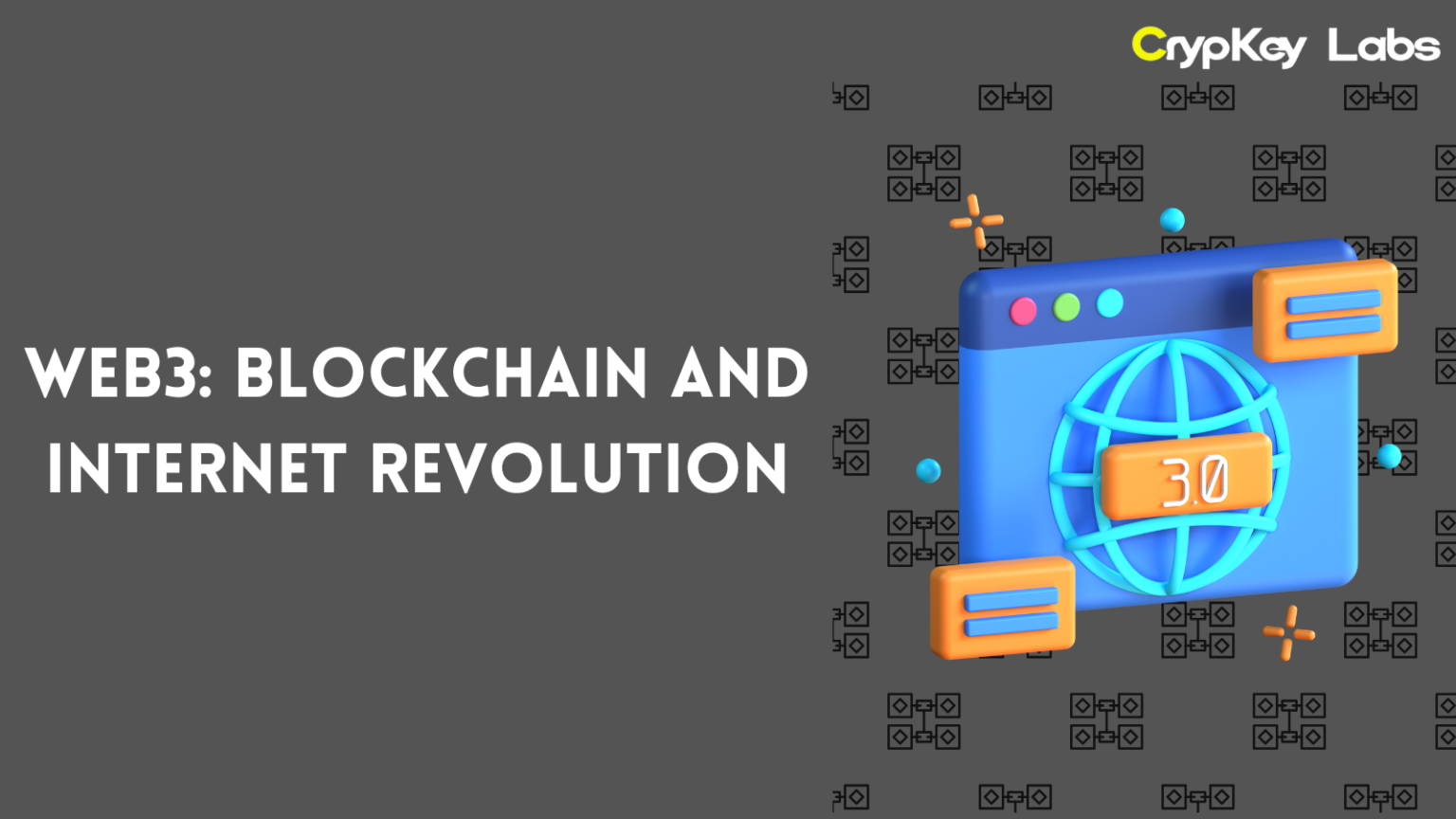The Internet has come a long way since its inception. We started with static web pages in the early days of Web1, moved to the interactive and user-generated content of Web2, and now we’re on the brink of a new era—Web3. This new phase promises to revolutionize the way we interact online, and at the heart of it all is blockchain technology. So, grab your favorite drink, sit back, and let’s dive into how blockchain is powering the next Internet revolution!
What Is Web3, Anyway?
Before we get into the nitty-gritty of blockchain, let’s clarify what Web3 actually is. In simple terms, Web3 is the next generation of the Internet, characterized by decentralization, user ownership, and enhanced privacy. While Web1 was all about reading content and Web2 focused on sharing and interacting, Web3 is about owning your data and having more control over your online experience.
Imagine a world where you don’t have to rely on giant corporations to manage your data. In Web3, users take the reins. You’re in charge of your digital identity, your assets, and your online interactions. That’s a game changer!
How Does Blockchain Fit In?
So, where does blockchain come into play? Well, blockchain is the underlying technology that makes Web3 possible. It’s a decentralized ledger that records transactions across multiple computers, ensuring that everyone has access to the same data without a central authority. Here’s why blockchain is essential for Web3:
Decentralization
One of the most significant shifts in Web3 is the move from centralized systems to decentralized ones. In Web2, platforms like Facebook, Google, and Amazon control vast amounts of user data and dictate how it’s used. In contrast, blockchain allows for decentralized applications (DApps) that operate on a peer-to-peer network. This means no single entity can control the platform or your data.
Transparency
Blockchain’s transparency is a game changer. Every transaction recorded on the blockchain is visible to everyone on the network. This transparency builds trust among users, as they can verify information independently. For example, in a decentralized finance (DeFi) platform, you can see the entire history of transactions, making it clear that no one is pulling the wool over your eyes.
Security and Privacy
In an age where data breaches and privacy concerns are rampant, blockchain offers a more secure way to handle information. Thanks to cryptographic techniques, your data is encrypted and stored on the blockchain, making it difficult for hackers to access. Plus, with blockchain, you control who gets to see your data, enhancing your privacy like never before.
Key Technologies Powering Web3
Now that we understand how blockchain supports Web3, let’s look at some of the key technologies that are driving this revolution.
Smart Contracts
You may have heard the term “smart contracts” thrown around in discussions about blockchain. But what exactly are they? Simply put, smart contracts are self-executing contracts with the terms of the agreement directly written into code. They automatically execute actions when certain conditions are met.
For instance, imagine you want to get a digital artwork as an NFT (Non-Fungible Token). A smart contract can facilitate the transaction without needing a middleman. This not only streamlines the process but also reduces the risk of fraud.
Decentralized Finance (DeFi)
DeFi is one of the most exciting applications of Web3. It refers to a movement that aims to recreate traditional financial systems—like lending, borrowing, and trading—using decentralized technologies. With DeFi, anyone with an internet connection can access financial services without going through banks or financial institutions.
Picture this: you can lend your cryptocurrency to others and earn interest, all without a bank taking a cut. Or you can borrow against your crypto holdings without filling out mountains of paperwork. It’s a new financial landscape that’s open to everyone.
Non-Fungible Tokens (NFTs)
NFTs have taken the digital world by storm, and they’re a crucial part of Web3. Unlike cryptocurrencies like Bitcoin, which are interchangeable, NFTs represent unique digital assets. They can be anything from digital art and music to virtual real estate.
What’s cool about NFTs is that they allow creators to maintain ownership and earn royalties on their work. Imagine an artist selling a piece of digital art as an NFT, and every time it’s resold, they get a percentage of the sale. That’s a win-win for creators!
Decentralized Autonomous Organizations (DAOs)
DAOs are another exciting component of Web3. These organizations operate through smart contracts and are run by the community rather than a centralized authority. Members can vote on proposals, manage funds, and make decisions collectively.
DAOs empower users to have a direct say in how organizations are run. For example, a group of financiers could create a DAO to fund promising projects, and every member has a vote on where the funds go. It’s a democratic approach to organization and funding.
Real-World Applications of Web3
Web3 isn’t just a theoretical concept; it’s already making waves across various industries. Here are a few real-world applications that highlight its potential:
Finance
The DeFi revolution is well underway, with platforms like Uniswap and Aave allowing users to trade and lend cryptocurrencies without intermediaries. These platforms are changing how we think about money and finance, making it more accessible and inclusive.
Gaming
Web3 is transforming the gaming industry too. Games like Axie Infinity and Decentraland allow players to earn cryptocurrency and own in-game assets as NFTs. Imagine spending hours grinding in a game and actually owning your achievements, which can be bought or sold on the open market. That’s the power of Web3 in gaming!
Social Media
Decentralized social networks are emerging as alternatives to traditional platforms. These networks prioritize user privacy and data ownership. Platforms like Lens Protocol allow users to control their data and interact without the risk of censorship or data exploitation.
Digital Identity
Blockchain technology is also being used to create secure digital identities. Users can manage their identities without relying on central authorities. This means you can prove your identity online without sharing unnecessary personal information—talk about a win for privacy!
Challenges and Criticisms of Web3
While the potential of Web3 is exciting, it’s not without challenges. Here are some of the hurdles that need to be addressed:
Scalability Issues
Scalability is a hot topic in the blockchain world. Many blockchain networks face challenges in processing a high volume of transactions quickly and efficiently. Solutions like Layer 2 protocols and Ethereum 2.0 are being developed to tackle these issues and improve scalability.
Energy Consumption
Blockchain networks like Bitcoin have faced criticism for their energy consumption. The process of mining and validating transactions requires a significant amount of energy. However, many projects are exploring alternative consensus mechanisms, such as proof-of-stake, to reduce their environmental impact.
Regulatory Concerns
As with any disruptive technology, regulation is a concern for Web3. Governments are grappling with how to regulate decentralized systems without stifling innovation. Striking the right balance between regulation and freedom will be crucial for the success of Web3.
The Future of Web3
The future of Web3 is bright and full of possibilities. As blockchain technology continues to evolve, we can expect to see even more innovative applications that transform industries. Imagine a world where you have complete control over your data, your identity, and your assets.
Web3 has the potential to disrupt major industries like finance, media, and even governance. By empowering individuals and fostering decentralization, we can create a more equitable digital world where everyone has a seat at the table.
Conclusion
In conclusion, Web3 represents the next Internet revolution, fueled by blockchain technology. With decentralization, transparency, and security at its core, Web3 is set to empower users like never before. Whether it’s through DeFi, NFTs, or DAOs, the potential for innovation is limitless.
As we move into this new era, it’s essential to stay informed and engaged. The possibilities are exciting, and being part of the Web3 movement means participating in shaping the future of the Internet. So, let’s embrace this revolution together and see where it takes us!







